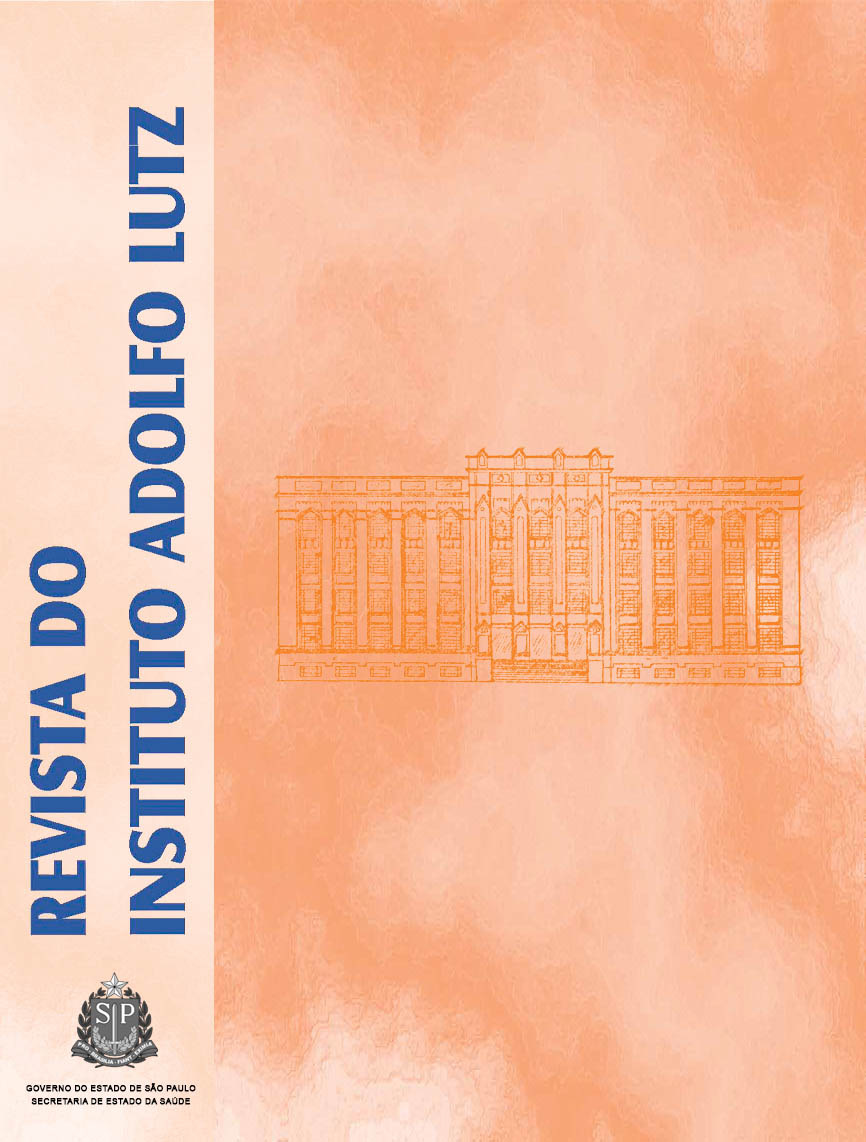Abstract
PFGE ("pulsed field gel electrophoresis") is an electrophoresis technique suitable for separating large fragments of DNA by means of DNA reorientation in agarose gel from the effects of alternated electric fields. This technique is considered as gold standard for performing bacteria, yeast and protozoa strains identification. The main objective of the present review is to update the PFGE technical basis for being suitable for bacteria studies. Its resolution depends on a series of factors such as agarose concentration, temperature, buffer solution, pulse time, and running time. Understanding the involved molecular mechanisms in this type of electrophoresis technique is fundamental for maximizing and attaining accurate analysis results.References
1. Fangman W. Separation of very large DNA molecules by gelelectrophoresis. Nucleic Acid Res 1978; 5: 653-65.
2. Smith CL, Cantor CR. Purification, specific fragmentation, andseparation of large DNA molecules. Meth Enzimol 1987; 155: 449-67.
3. Schwartz DC, Cantor RC. Separation of yeast chromosome-sized DNAs by pulsed field gradient gel electrophoresis. Cell 1984; 37: 67-75.
4. Klotz LC, Zimm BH. Retardation times of deoxyribonucleic acidsolutions. II. Improvements in apparatus and theory. Macromolecules1972; 5: 471-81.
5 . Birren B, Lai E. Switch intervals and resolution in pulsed field gels. In:Pulsed field gel electrophoresis. A practical guide. San Diego: Academic Press; 1993. p.107-20.
6. Deutsch JM. The dynamics of DNA gel electrophoresis. In:Burmeister, M., Ulanovsky, L. Pulsed-Field Gel Electrophoresis –Protocols, Methods and Theories. New Jersey: Humana Press; 1992.p. 367-84.
7. Gennes PG. Reptation of a polymer chain in the presence of fixedobstacle. J Chem Phys 1971; 55: 572-9.
8. Lerman LS, Frisch HL. Why does the electrophoretic mobility of DNA ingels vary with the length of the molecule? Biopolymers 1982; 21: 995-7.
9. Lumpkin OJ, Dejardin P, Zimm BH. Theory of gel electrophoresis of DNA. Biopolymers 1985; 24: 1575-93.
10. Bustamante C, Gurrieri S, Smith SB. Towards a molecular descriptionof pulsed filed gel electrophoresis. TIBTECH 1993; 11: 23-30.
11. Gurrieri S, Smith SB, Wells KS, Johnson ID, Bustamante C. Real-timeimaging of the reorientation mechanisms of YOYO-labelled DNAmolecules during 90° and 120° pulsed field gel electrophoresis. NucleicAcids Res 1996 24: 4759-67.
12. Pfaller MA, Messer SA, Hollis RJ. Strain delineation and antifungal susceptibilities of epidemiologically related and unrelated isolates ofCandida lusitaniae. Diagn Microbiol Infect Dis 1994; 20: 127-33.
13. Chu G, Vollrath D, Davis RW. Separation of large DNA molecules bycontour-clamped homogeneous electric fields. Science 1986; 232: 1582-5.
14. Maule J. Pulsed-field gel electrophoresis. Mol Biotechnol 1998; 9: 107-26.
15. Koort JM, Lukinmaa S, Rantala M, Unkila E, Siitonen A. Techinical improvement to prevent DNA degradation of enteric pathogens inpulsed field gel electrophoresis. J Clin Microbiol 2002; 40: 3497-8.
16. Ray T, Weaden J, Dyson P. Tris-dependent site-related cleavage of Streptomyces lividans DNA. FEMS Microbiol Lett 1992; 96: 247-52.
17. Römling V, Tümmler B. Achieving 100% typeability of Pseudomonasaeruginosa by pulsed-field gel electrophoresis. J Clin Microbiol 200;38: 464-5.
18. Burke DT, Carle GF, Olson MV. Cloning of large DNA fragments ofexogenous DNA into yeast by means of artificial chromosome vectors. Science 1987; 236: 806-12.
19. Sambrook J, Fritsch EF, Maniatis T. Molecular cloning: a laboratorymanual. 2.ed. United States of America: Cold Spring Harbor Laboratory Press; 1989. vol.1, p.1.21-1.31.
20. Van der Ploeg LHT, Gottesdiener M, Kormun H, Weiden M, Le BlancqS. Protozoan Genomes: Karyotype analysis, chromosome structure,and specific libraries. In: Burmeister M, Ulanovsky L, eds. Pulsed-Field Gel Electrophoresis – Protocols, Methods and Theories,. TheHuman Press Inc. 1991, p 203-24.
21. Miragaia M, Couto I, Perreria SF, Kristinsson KG, Westh H, Jarlov JO, et al. Molecular characterization of methicillin-resistant Staphylococcus epidermidis clones: evidence geographic dissemination.J Clin Microbiol 2002; 40: 430-8.
22. Tenover FC, Arbeit RD, Goering RV, Mickelsen PA, Murray BE,Persing DH, Swaminathan B, et al. Interpreting chromosomal DNArestriction patterns produced by Pulsed-Field Gel Electrophoresis:Criteria for bacterial strain typing. J Clin Microbiol 1995; 33:2233-9.
23. Kreiswirth B, Kornblum J, Arbeit RD, Eisnes W, Maslow JN, MageerM, et al. Evidence for a clonal origin of methicillin resistance inStaphylococcus aureus. Science 1993; 259: 227-30.
24. Boyle JF, Soumakis SA, Rendo A, Herrington JA, Gianarkis DG,Thurberg BE, Painter BG, et al. Epidemiological analysis and genotypiccharacterization of a nosocomial outbreak of vancomycin-resistantenterococci. J Clin Microbiol 1993; 31: 1280-5.
25. Endtz HP, Van den Braak N, Kluytmans JA, Koeleman JG, SpanjaardL, Voss A, et al. Fecal carriage of vancomycin-resistant enterococci inhospitalized patients and those living in the community in theNetherlands. J Clin Microbiol 1997; 35: 3026-31.
26. Pellegrino FL, Teixeira LM, Carvalho M dM da G, Aranha Nouer S,Pinto de Oliveira M, Mello Sampaio JL, et al. Occurrence of a multidrug-resistant Pseudomonas aeruginosa clone in different hospitals in Riode Janeiro, Brazil. J Clin Microbiol 2002; 40: 2420-4.
27. Speert DP, Henry D, Vandamme P, Corey M, Mahenthiralingam E.Epidemiology of Burkholderia cepacia Complex in patients withcystic fibrosis, Canada. Emerg Infect Dis 2002; 8: 181-7.
28. Dib J C, Dube M, Kelly C, Rinaldi ME, Patterson JE. Evaluation ofpulsed field gel electrophoresis as typing system for Candida rugosa: comparison of karyotype and restriction fragment length polymorphisms. J Clin Microbiol 1996; 34: 1494-6.
29. Pfaller MA. Typing methods for epidemiologic investigation. In :Ballows, A. Manual of clinical microbiology. 5ed. Washington: American Society for Microbiology; 1991. p.171-82.
30. Darini AL, Magalhães VD, Levy CL, Barth AL, Coscina AL.Phenotyping and genotyping methods applied to investigate therelatedness of Brazilian isolates of Enterobacter cloacae. Braz J MedBiol Res 1999; 32: 1077-81.
31. Magalhães VD, et al. Third generation cephalosporins selecting aparticular strain of multiresistant Staphylococcus aureus. Abstractpresented at the 97th General Meeting of the American Society for Microbiology, Miami Beach, Florida 1997; 195L: 375.
32. Liu SL, Schryrers AB, Sanderson KE, Johnston RN. Bacterial phylogenetic clusters revealed by genome structure. J Bacteriol 1999;181: 6747-55.

This work is licensed under a Creative Commons Attribution 4.0 International License.
Copyright (c) 2005 Instituto Adolfo Lutz Journal
